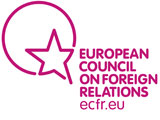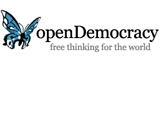Colliding Geopolitics and the Arab Autumn
6 Dec 2011
One of the enduring questions surrounding the Arab Spring and now Autumn is an open one– do these populist movements represent a genuine democratic awakening in the Arab world? It’s an important question but from a geopolitical perspective perhaps not the right one. Trita Parse and Reza Marashi, in their article “The Geopolitical Battle for the Arab Street,” argue that the Arab uprisings have unleashed an intense rivalry for regional influence among three vertices of power in the Middle East – 1) the United States and its allies Israel and Saudi Arabia; 2) Turkey; and 3) Iran. The most pressing geopolitical question facing each of these powers is whether it can effectively exploit the recent victories of the “Arab street” to further its own influence in the region. Mehran Kamrava, in contrast, has already proclaimed a winner in this battle for influence. In his article external page“The Arab Spring and the Saudi-led Counter-Revolution,”call_made he sees Saudi Arabia, under the auspices of the Gulf Cooperation Council, as the chief geopolitical beneficiary of what has transpired thus far.
A triangle of competition?
According to Parse and Marashi, the battle for Arab hearts and minds has become fundamentally important to the geostrategic calculations of the United States, Turkey and Iran. While the latter has long been recognized as the region’s pre-eminent (indigenous) hard power, it was only after the 1979 revolution that it began to overcome its historical deficit in soft power – a deficit attributable to its cultural and confessional differences from the Arab world. Because of its vocal anti-imperialism and its uncompromising promotion of political Islam, Khomeini-led Iran may have alienated Arab elites but it also emerged as the widely admired champion of the Arab street, both against pro-Western dictatorships and against Israel. This ideological windfall meant that Iran was initially well-positioned to profit from the Arab Spring. The crucial requirement, however, was (and is) not to be seen as cooperative, either strategically or tactically, with the United States and its local allies. (Such cooperation might be construed as participating in or acquiescing to a corrupt status quo.) As a result, Iranian hardliners seek to continue a “codified rivalry” with the American camp. As seen from their perspective, sustaining the rivalry will enable Iran to continue building its soft power credentials in a volatile region at limited cost. It gets to be the premier critic of “Family Incorporated” Arab regimes and Israel, but it also gets to avoid stoking the fires of open military confrontation, which the Iranian regime could not survive.
Meanwhile, the US-Israel-Saudi Arabia triad is being strained by an inherent contradiction – the democratic values of the American people, who largely favor the popular uprisings, and the strategic interests of the three regimes, which overwhelmingly maintain the status quo. The US’s tentative, late-in-coming support for the revolts in Tunisia and Egypt wasn’t seen as tepid enough in Tel-Aviv and prompted Saudi fears of an American “betrayal” that would allow the hard winds of change to blow into Riyadh. That the Saudi invasion of Bahrain to crush a largely Shia-led uprising went ahead despite strong US objections was a sign of deep fractures in what is still America’s (and the region’s) second-most consequential strategic relationship. These fractures, when looking at the broader geopolitical picture, may appear to be hard power-centered, but they actually are not. A matter of far greater urgency, or so Parse and Marash argue, is whether America’s image on the ‘Arab street’ will be defined by its widely-touted democratic values or its cozy relationship with autocratic cronies. At stake, of course, is the soft power it can actually wield in the region, both now and in the future. If the United States remains conflicted and/or ambiguous towards the consequences of the Arab Spring and Autumn, especially when it comes to its closest regional allies, Iran will have more opportunities to refine its posture as a champion of the ‘Arab street’. Some have argued that it hasn’t done that particularly well recently, but for the moment Iran continues to see geopolitical opportunities instead of just the usual dangers in the greater Middle East.
Despite Iran’s improved geopolitical fortunes, perhaps the most striking geopolitical consequence of a declining status quo in the Middle East is the rising influence of Turkey. Yet, like Iran, Turkey also faces cultural disadvantages in pursuing soft power in the Arab world. (Those who exhort the area’s new polities to adopt the Turkish Model conveniently forget that the model has considerable imperialist Ottoman trappings associated with it.) But whereas Iran has attempted to surmount this deficit through an ideologically-based strategy that pits the Arab street against Arab elites and crony-based regimes, Turkey has pursued a strategy of trade, investment and conventional diplomacy that is palatable to all. To the irritation of Teheran, Ankara has also hijacked its “anti-status-quo mantle” with its recent public criticisms of Israel. Though Turkey’s closeness to the West raises questions as to whether it can credibly oppose the status quo in the long term, its brand of Islamic democracy and its “zero problems” foreign policy could represent an appealing model indeed. And in a recent poll, the most popular world leader on the Arab street was not Iranian President Mahmoud Ahmadinejad but Turkey’s Prime Minister, Recep Tayyip Erdoğan.
Or a Saudi autumn?
The above geopolitical filter may be well and good, Mehran Kamrava argues, but as far as he’s concerned it remains an open question how the profound political changes in the domestic politics of the Arab world will alter international relations throughout the region. One thing is for sure, though. From the perspective of the monarchical regimes of the Gulf Cooperation Council (GCC) – Saudi Arabia, the United Arab Emirates, Bahrain, Qatar, Kuwait, and Oman – the uprisings of the Arab Spring represent the most serious crisis since the Iranian revolution which threw the region into near-chaos in the early 1980s. As before, the perceived threat now is that the Arab Spring and Autumn may inspire further unrest among the Shia communities prevalent in many GCC states, as witnessed recently in Bahrain. The result of this unrest, again as before, could be greater Iranian geopolitical leverage vis-à-vis Saudi Arabia across the Middle East.
By and large, the Persian Gulf regimes have internally responded to this threat by combining repression with economic incentives. Externally, however, the most significant change has been the reassertion of Saudi leadership in the GCC. The two most important drivers in this adjustment have been the Saudis’ belief that their traditional American allies can no longer be counted on to help them when needed, and that they are now vulnerable to a kind of domino theory – that is, if they allow events to unfold unchecked, they will inevitably confront trouble at home. The confluence of these two ideas, in turn, has prompted Saudi Arabia into “spearheading what is by all accounts a region-wide ‘counter-revolution.’” Significant expressions of this pushback include giving Egypt $4 billion “to shore up the fledgling post-Mubarak order” and offers to Jordan and Morocco to join the GCC. (One could argue, in fact, that the Jordanian military is increasingly becoming a mercenary force on behalf of its GCC allies.) Also central to this response has been the denouncing and confronting of Iran in widely disparate areas, ranging from Bahrain to Western Afghanistan.
All these counter-revolutionary overtures, Kamrava muses, may serve as the wellspring of a new form of pan-Arabism. In the past, pan-Arabism flourished in response to the stresses of European colonialism and Israeli pressure, generally under the leadership of Egypt and, to a lesser extent, Syria. Today, the new stresses caused by the Arab Spring and Autumn may be grabbing the attention of Arab world once more, and – with Egypt currently compromised – providing Saudi Arabia with the opportunity to seize the mantle of leadership in unique ways. The prospect of an Arab world under the auspices not of a marginalized Arab League but of the GCC – which is an organization of monarchical, Family Inc. regimes – is, for Kamrava, a matter of fundamental significance.
The elephant in this particular room, however, remains Iran. Despite counter-revolutionary rhetoric to the contrary, the Arab Spring and Autumn is unlikely to change the fundamental posture of Saudi Arabia and the GCC towards Iran following the pending US withdrawal. Riyadh will continue to view Iran as the “gravest threat to regional stability” without being able to act independently to against Teheran’s growing influence in its spheres of influence. And as much as it would like to bring Iraq into the GCC fold, Saudi Arabia knows that its ethno-sectarian composition – and Shia majority – makes enhanced cooperation or integration far too risky at the present moment.
Conclusion
For Parse and Marashi, the geopolitics of the new Middle East can be best characterized as a triangle of competition – between the US and its allies, an opportunistic Iran, and an increasingly empowered Turkey – for the hearts and minds of the Arab street. There may be, however, a slightly different dynamic at play. Saudi Arabia, as a long-time aspiring leader of the Arab world, may indeed make a play to expand its regional influence and global profile. With Egypt remaining in a state of political flux and Iraq’s distinct ethnic groupings remaining susceptible to external political influences, both Iran and Saudi Arabia are wide open to the possibility of dramatically expanding their influence in a new balance of power dynamic in the region – a dynamic that might be the Middle East’s version of the Great Game.
Partner Content
[Image:88173]The Arab Spring in Bahrain and the Gulf
At the moment the main opposition group in Bahrain, is calling for a number of changes and issues to be addressed. One issue is that of transforming the country into a constitutional monarchy.
[Image:88178]Dubai, Qatar, and the Gulf Emirates' Uncertain Path to the Future
While Dubai has always stood out as a bastion of liberalism within the region, there are signs that it is not entirely untouched by regional reactions to the nascent Arab democratic movements.
[Image:88923]Challenges to Turkey's "Soft Power" in the Middle East
TESEV’s public opinion surveys in the Arab world that were conducted in 2009 and 2010 demonstrated that Turkey’s attractiveness has been quite high in the region. The question remains, however, how Turkey exercises its soft power, an issue that has become all the more relevant as a result of the Arab Spring.

Is Iran Immune From the Arab Spring?
Iran has so far remained relatively unaffected by the winds of change that have swept through the Middle East and North Africa. Yet this was not a foregone conclusion. Given the opposition’s ability to build on a recent wave of mobilization to revive the calls for protests triggered in 2009, why has it not taken advantage of the regional domino effect?

The Political Outlook for Saudi Arabia
This paper is a summary of a roundtable discussion on ‘The Political Outlook for Saudi Arabia’ held at Chatham House on 31 May 2011. The discussion covered both Saudi domestic politics and Saudi Arabia’s position in a changing Middle East.

external pageThe geopolitical implications of the Arab Springcall_made
This blog post summarizes a talk given by the European Council on Foreign Relations' Parag Khanna in July 2011. According to him, the Arab Spring is a "marathon not a sprint," and we are only on mile two.

external pageThe Difficult Bit: The Arab Spring After Libyacall_made
The outcome of the Libyan conflict leaves the Arab world’s wider political momentum to be decided by the interplay between mobilization and repression, writes Mark Taylor.

external pageSyria, Iran and the Balance of Power in the Middle Eastcall_made
Expecting a shift in the Middle Eastern balance of power in favor of Iran after the US withdrawal from Iraq, the US and Israel are making countermoves. Questions remain, writes George Friedman, whether these countermoves will stabilize the region and whether or how far Iran will go in its response.

external pageGeopolitical Journey: Iran at a Crossroadscall_made
Geopolitically, a trip to Iran could not come at a better time, writes Kamran Bokhari. Iran is an emerging power seeking to exploit the vacuum created by the departure of US troops from Iraq. Tehran also plays a major role along its eastern border, where Washington is seeking a political settlement with the Taliban to facilitate a US withdrawal from Afghanistan.

external pageRe-Examining the Arab Springcall_made
The standard analysis of the Arab Spring was that oppressive regimes had been sitting on a volcano of liberal democratic discontent. The belief was that the uprising, supported by Western democracies, would generate sweeping political change across the Arab world. George Friedman reminds us, however, that so far no regime has fallen, only individuals have been replaced.

